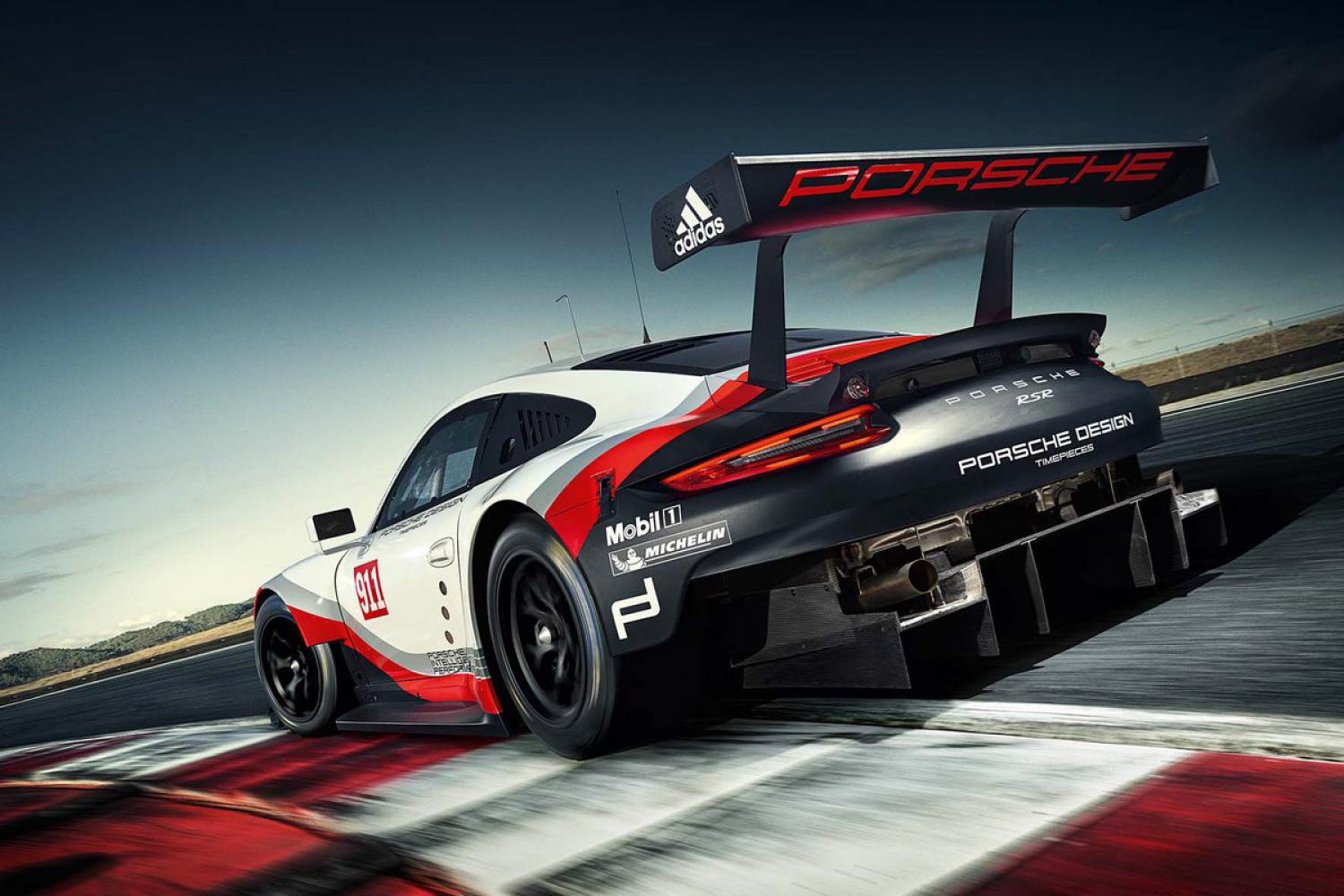Unlike Ferrari which has made the move to a turbo, Porsche has opted for an aspirated engine, retaining the flat-six unit positioned in front of the rear axle. The lightweight, four-litre engine is highly efficient.
This is the first Porsche GT race car to feature state-of-the-art assistance systems: the 911 RSR is outfitted with a radar-supported collision warning system named the “Collision Avoid System.” Even at night, the faster LMP prototypes will be detected early on and possible misunderstandings avoided. A new safety cage design and a new, sturdily-mounted racing seat are in-place to ensure driver safety. With the seat secured to the chassis, the pedalry is now movable and adjustable to accommodate the driver.
The serviceability of the new 911 RSR is also notably optimized: entire portions of the carbon-fibre body can be switched out rapidly as a result of convenient quick-release fasteners. Also, modifications to the suspension set-up can be completed easier and faster.
Head of Porsche Motorsport Dr. Frank-Steffen Walliser: "While retaining the typical 911 design, this is the biggest evolution by now in the history of our top GT model. The new 911 RSR is a completely new development: the suspension, body structure, aerodynamic concept, engine and transmission have all been designed from scratch. The engine concept has enabled the designers to install a particularly large rear diffuser. Combined with a top-mounted rear wing adopted from the LMP1 race car, the 919 Hybrid, the level of downforce and the aerodynamic efficiency were significantly improved."
In 2017, two Porsche 911 RSRs - in their standard white, black and red livery - will be entered by Porsche in the World Endurance Championship (WEC), including the 24 Hours of Le Mans, and in the American championship. In preparation, Porsche has conducted a testing campain, since last March's tweaking, comprised of more than 35,000 km in Europe and in the U.S.
Quotation from Porsche press release.

